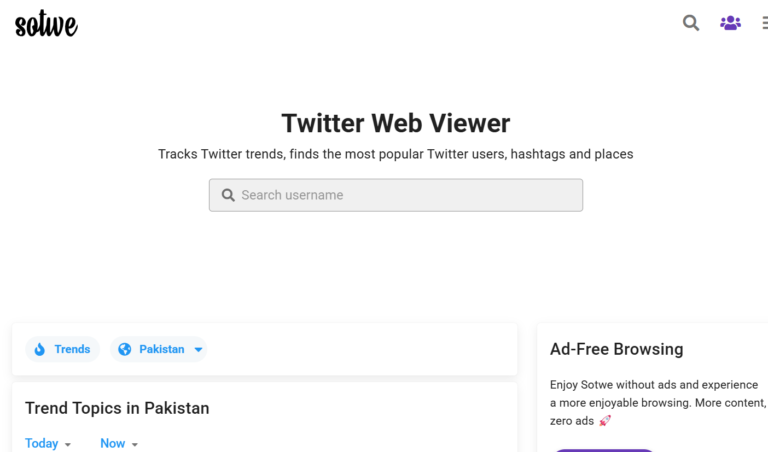Understanding the Importance of Cloud Access Security Brokers (CASBs) in Protecting Online Data
Introduction to Cloud Access Security Brokers
Cloud technologies have revolutionized storing and managing data, presenting opportunities and challenges. In the digital fabric of cloud computing, security is both a paramount concern and a significant undertaking. Within this milieu, Cloud Access Security Brokers—or CASBs—play a pivotal role. Functioning as the enforcement point for security policies as data travels between on-premises devices and cloud service providers, CASBs manage and secure the data transmission, effectively becoming the watchguards for cloud-bound traffic.
Historically, the inception of CASBs can be traced back to the early stages of the cloud era, when many organizations were confronted with the need to extend their security perimeters in response to the escalating adoption of cloud services. Once considered a luxury of forward-thinking IT departments, CASBs have become imperative for businesses that maintain robust security postures in complex cloud environments. The evolution from traditional on-premises infrastructure to a decentralized model of cloud services precipitated the need for security solutions capable of operating in a more dynamic, heterogeneous landscape. By positioning themselves as intermediaries, CASBs have reshaped the approach to cloud security, building a bridge that allows secure and responsible cloud adoption.
In essence, CASBs crystallize the convergence of security and convenience. Organizations striving to leverage the benefits of cloud computing must navigate the trade-offs between accessibility and security. CASBs enable this balance by providing comprehensive visibility into cloud application usage, fine-grained data control, and robust risk management. Hence, diving into the depths of CASBs is instrumental for any IT professional looking to navigate the expansive seas of modern cybersecurity.
Core Functions of CASBs
An increasingly pervasive tool in the cybersecurity industry, the CASB ensures that organizational data policies adhere consistently, even beyond the traditional boundaries of the company network. The core functions of CASBs can be delineated into four main pillars: visibility, compliance, data security, and threat protection. CASBs offer deep insight into organizations’ cloud application use by monitoring and recording all activities and transactions. With a CASB in place, companies can have a bird’s-eye view of all cloud-based services being accessed. CASBs also enable them to understand usage patterns and assess the risk profile associated with each cloud application. This visibility is invaluable in today’s corporate environment, where shadow IT—a phenomenon where employees use unapproved cloud services—can introduce significant security vulnerabilities.
Additionally, CASBs provide a robust framework supporting compliance with an ever-expanding array of data security and privacy regulations. As institutions such as financial service firms and healthcare providers migrate to the cloud, meeting these mandates is non-negotiable. CASBs facilitate this by mapping data flows and applying appropriate controls, such as encryption, to shield sensitive information during transit and at rest.
1:
On the frontline of defense, CASBs deploy an arsenal of measures, from access controls to encryption and tokenization, safeguarding sensitive assets in the cloud. They can be configured to integrate with various Identity and Access Management (IAM) systems, reinforcing authentication protocols and restricting access based on user roles and permissions. This integration creates a fortified barrier, curbing unauthorized access and maintaining the sanctity of data.
The importance of adopting a CASB cannot be overstated, especially in an era where cyber threats have become more sophisticated and data breaches are more costly. In integrating a CASB solution, companies ensure they possess a proactive mechanism capable of offering a sophisticated, layered security model tailored to the organization’s needs. The goal is, after all, not merely to deploy technology for technology’s sake but to enhance and secure the operation of a business in a digital world.
The Growing Importance of CASBs in Data Protection
Several contemporary trends amplify the importance of CASBs in the current digital ecosystem. The transition to cloud services has been catalyzed by the rise of remote working, which, in turn, has thrust cloud security into the limelight. As workers access sensitive corporate data from various locations on various devices, the potential attack surface for cyber threats widens. CASBs mitigate this risk by providing consistent security policies and controls across all cloud services, ensuring that data remains protected regardless of where or how it is accessed.
Moreover, regulatory requirements for data protection have become increasingly stringent, necessitating robust compliance management. CASBs are uniquely positioned to assist organizations in navigating the maze of regulations such as the Global Data Protection Regulation (GDPR) and the Health Insurance Portability and Accountability Act (HIPAA). By enforcing policies that align with these regulations and monitoring compliance, CASBs act as an essential tool for companies endeavoring to meet their legal obligations.
The Security Magazine article on the critical role of CASBs concisely illustrates their significance. It shows how organizations that might otherwise be exposed to data breaches and regulatory penalties benefit from the comprehensive protection that CASBs offer. As businesses continue to digitize their operations and delve deeper into cloud computing, the role of CASBs is becoming ever more vital in providing cyber defense.
CASBs and Threat Prevention
Cyber threats are dynamic and constantly evolving, challenging organizations to remain vigilant and proactive in their security measures. CASBs serve a critical function, offering an integrated threat prevention, detection, and response platform. Utilizing sophisticated analytics and user behavior monitoring, CASBs can identify anomalous activities that could signify an impending threat. Advanced heuristic engines allow them to discern between regular usage patterns and aberrant behavior that may coincide with cyber attacks, providing early-warning defenses to IT security teams.
These threat prevention capabilities are empowered by indicators of compromise and threat intelligence mechanisms that help to identify and assess new threats as they emerge. Thanks to the collective insights gathered across numerous deployments, CASBs can adapt their defensive strategies in real-time, offering organizations a resilient defense against known and unknown threats. This continuous monitoring ensures the quick isolation of suspicious activities or compromised accounts, thereby reducing the damage potential and hastening response times.
With the conventional perimeter of the corporate network becoming ill-defined due to the prevalence of cloud and mobile technologies, the emphasis has shifted to a more user and access-centric perspective on security. CASBs have embraced this paradigm by securing access points and monitoring data flows to prevent data exfiltration by malicious insiders or compromised credentials.
Data Security in the Cloud
Cloud services inherently provide greater flexibility and scalability for handling the voluminous data generated by modern enterprises. However, with this convenience comes an elevated responsibility to ensure the security and integrity of data. CASBs address this responsibility head-on by implementing robust security measures, such as encryption and tokenization, which shield data even in a security breach. This level of encryption provides a secure container for sensitive data, rendering it impervious to unauthorized access, whether stored within the cloud or transmitted across networks.
Moreover, many CASBs offer policy-based security controls that enable businesses to protect and control the flow of information. Using data loss prevention (DLP) strategies integrated into CASBs, companies can prevent sensitive information from being shared or stored in unauthorized cloud applications. These tools are invaluable for maintaining data hygiene and ensuring that only the intended parties can access sensitive materials.
Highlighted by Forbes Tech Council, CASBs are increasingly becoming a best practice for businesses looking to secure their cloud infrastructure. CASBs enable enterprises to harness the cloud’s power without compromising security by creating a secure environment where sensitive data can reside. This protection is not a static one-time setup but a dynamic feature that evolves with new security threats and business needs.
Compliance and Governance in the Cloud
In regulatory compliance, CASBs offer a comprehensive solution for effectively managing and monitoring adherence to industry regulations and standards. They act as a central enforcement point for data governance and compliance policies critical for organizations operating in the cloud. Armed with extensive reporting mechanisms, CASBs facilitate the auditing processes required to prove compliance with various standards, making them indispensable for businesses under stringent regulations.
Governance takes on a whole new meaning when working in multi-tenant cloud environments. CASBs provide clarity and control by allowing organizations to track user activities, identify security gaps, and enforce data protection directives uniformly. This level of governance ensures that compliance and security are maintained without compromise, regardless of how cloud services are used within an organization. The capability of CASBs to automate compliance processes not only aids in reducing human error but also allows companies to stay abreast of the latest regulatory changes.
The implications of non-compliance can be severe, potentially resulting in reputational damage and hefty fines. The trust of customers and partners is of equal importance, which hinges on the assurance that their data is handled with the utmost care. CASBs are pivotal in securing that trust by demonstrating an organization’s commitment to ensuring and responsibly managing data.
Managing Multiple Cloud Services
The modern IT landscape has been characterized by a proliferation of cloud services, often resulting in a complex mosaic of technologies and platforms within organizations. This multifaceted ecosystem can pose challenges for managing security and compliance postures. CASBs emerge as a crucial instrument in orchestrating security across these dispersed services. By offering a single pane of glass through which multiple cloud applications can be managed, CASBs simplify security administration and enforce consistent policies.
An effective CASB aligns with an organization’s multi-cloud strategy, enabling seamless integration and centralized policy management. This unification is particularly significant given the diversity of cloud environments, each with unique security interfaces and settings. With the help of CASBs, businesses can streamline security management, maintain consistent compliance standards, and fortify their digital assets against potential threats while delivering the agile and responsive service that users expect from cloud-based solutions.
Choosing the Right CASB Solution
As with any substantial IT endeavor, selecting the optimal CASB solution is a critical decision that requires careful consideration. The chosen system must not only satisfy present security and compliance requirements but also adapt to future developments. This forward-looking approach is essential for maintaining an effective security posture in the dynamic landscape of cloud computing. Aspects such as scalability, ease of deployment, the breadth of cloud application coverage, and integration with existing security tools are key factors that organizations must weigh when evaluating different CASB offerings.
Additionally, it is essential to understand the various service models CASB vendors use. These may range from on-premises appliances to cloud-based platforms, each with advantages and considerations. Organizations should also examine the vendor’s roadmap, assessing their commitment to updating and evolving the CASB platform in line with emerging security threats and changing regulatory requirements.
Implementing CASBs in Your Cybersecurity Strategy
Implementing a CASB into an organization’s cybersecurity strategy should be a deliberative process. It requires a technical integration into the IT landscape and a cultural adoption within the company. Employees at all levels should understand the importance of the CASB in protecting the organization’s digital resources. Accordingly, a comprehensive implementation plan must include clear communication, training programs, and readiness assessments to ensure the CASB is utilized effectively. Real-world success stories are powerful testimonies to the tangible benefits of a well-executed CASB strategy, such as preventing data breaches, thwarting cyber-attacks, and maintaining continuity in the face of crises.
The Future of CASBs in Cybersecurity
As we glance forward, it is evident that CASBs will remain dynamic in their capabilities and roles. Anticipated advances in technology, particularly in artificial intelligence (AI) and machine learning, are poised to considerably augment the functionality and efficacy of CASBs. With sophisticated algorithmic advancements, future CASBs will likely offer even more nuanced threat detection and automated responses. Moreover, as regulatory frameworks for cybersecurity and data protection continue to develop, CASBs will be indispensable in ensuring that organizations can swiftly adapt to any new legislative landscape.
Organizations that remain abreast of these trends and align their cybersecurity strategies accordingly will be well-placed to leverage the benefits of CASBs. Preparing now for the evolutions expected in the cybersecurity sphere will position businesses to respond to threats and prophylactically address them, maintaining a steadfast and resilient stance in the digital age.
For more: Businesstechtime.com






